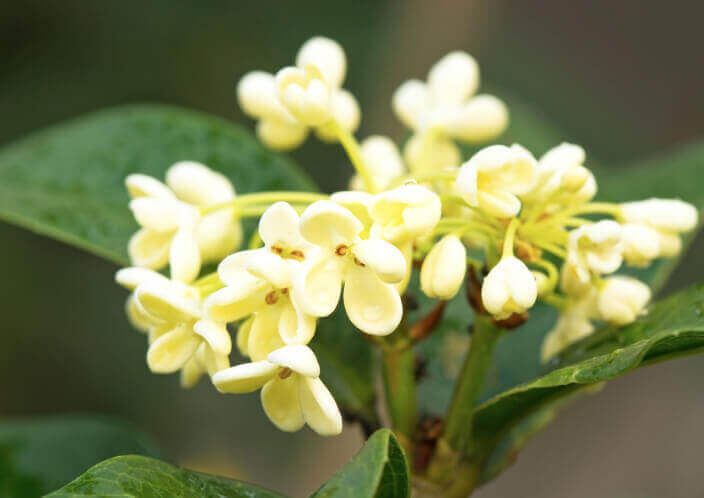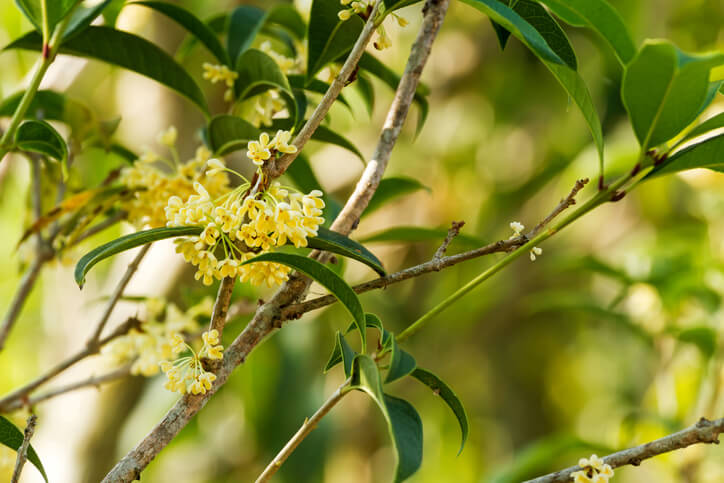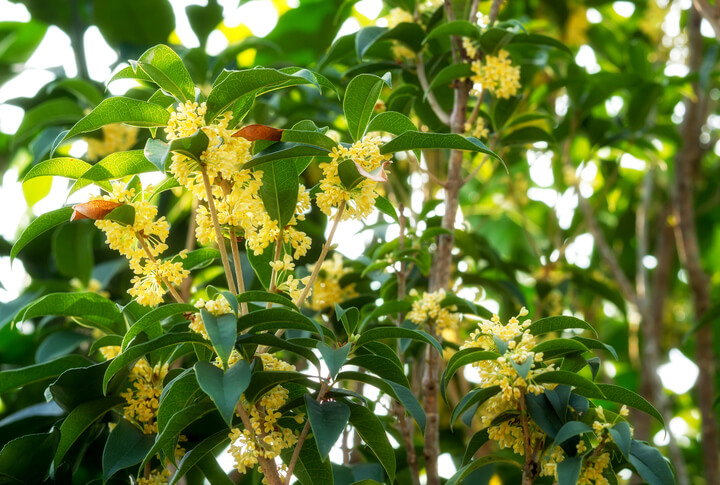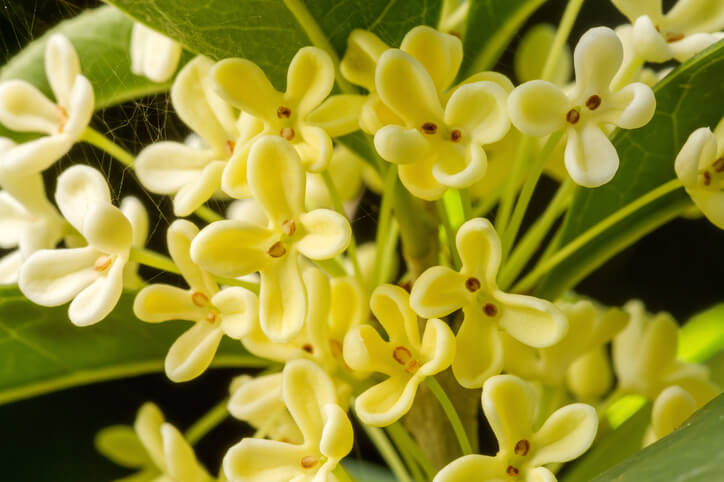
The Fragrant Tea Olive Tree Is a Gardener’s Delight
It’s not surprising that the tea olive tree (Osmanthus fragrans) has long been a favorite of gardeners and landscapers, with its beautiful fragrant flowers and notable hardiness. The tree can bloom several times a year, its white flowers filling the air with a distinctive, peach- or orange-like scent. The evergreen foliage is dark and leathery, providing a marked contrast with the tiny individual flowers. If you are curious about this wonderful plant, here are some tips on planting and caring for a tea olive tree.
Where and How to Plant Tea Olive Trees
When choosing a planting site, keep in mind that one of the most delightful things about the tea olive tree is its fragrance, so you want to plant it where you will enjoy the sweet scent of its blooms the most. If you can plant the tree near windows, a patio, or a screened-in porch, you will be able to enjoy its heavenly scent all season long. Tea olive trees can also be planted to form a hedge, which will enchant the senses of passersby.
While tea olive trees are extremely tough, there are some planting tips to follow that will maximize your chances of success with this particular plant. This includes the following:
- Tea olive trees should be planted in an area with full sun exposure to partial shade (although full sun is best). They will grow more densely in full sun than in shade. However, variegated types need a little shade, as they tend to bleach out in full sun.
- Tea olive trees thrive in well-drained, fertile and acidic soil, although they can tolerate clay, loam or sandy soils.
- The trees should be planted at minimum 4 to 6 feet apart.
- When putting the tree in the ground, position the root ball evenly with the ground.
- Water the tree deeply immediately after planting.
Care Tips
For the best results, follow these care tips:
- For the first year after you plant it, the tea olive tree should be given an inch of water a week as it becomes established. After the first season, you only need to irrigate it during dry spells, as most tea olives are extremely drought tolerant.
- While the tea olive tree doesn’t need a lot of pruning (at it maintains an attractive conical shape naturally), it does need a little bit of work each year, preferably in the early spring. At this time, you can cut out any dead or weak branches and in healthy areas cut back to right above a healthy leaf bud. Be sure to prune selectively, as severe pruning can prevent the shrub from blooming for several years. To form a small multi-trunked tree, remove the lower lateral branches.
- Also in the early spring, a complete fertilizer should be added (usually 10-10-10 is recommended). Ideally, you want the fertilizer to contain a slow release nitrogen, which will provide food for the plant throughout the growing season.
Climate
Tea olives do best in milder climates. Most are hardy in USDA zone 7b, but interpret this with caution. Much of Long Island is classified as zone 7b, for example, but the weather there is vastly different from North Carolina, much of which is also zone 7b. North Carolina rarely sees heavy snow or long periods of below-freezing temperatures, but both are common on Long Island.
If your local garden center offers tea olive trees, they’re likely to be varieties hardy in your region. It’s also possible to grow them in containers and move them indoors to overwinter. However, this can be tricky, and even experienced gardeners may have difficulty nurturing the plants through the winter.
Popular Tea Olive Tree Varieties
There are more than 20 tea olive tree cultivars, and most offer year-round interest in the form of evergreen foliage, flowers and fragrance. They’re relatively tough, low maintenance and drought tolerant once established. Most respond well to pruning, so they can be grown as specimen trees, shrubs or hedges.
Tea olives are sometimes called sweet olive because of the fragrance, or false holly because some have toothed, holly-like leaves. While the fragrant tea olive (O. fragrans) is perhaps the best known, these six varieties are also popular:
- Devilwood (O. americanus). The only osmanthus native to America, it grows up to 40 feet tall and about 20 feet wide. It has dark olive green leaves and produces small white flowers in spring followed by clusters of blue fruits that attract birds in fall and winter. The wood is difficult to split and challenging to work, hence the name. Learn more about Devilwood. (Zones 6 to 9)
- Fortunes (O. fortunei). A slow grower, it can reach 15 to 20 feet tall and 6 to 10 feet wide. It has solid dark green leaves that are toothed when small but become smooth as they mature. In fall, it produces small white flowers that are extremely fragrant. The variegated version has dark green leaves with white borders. (Zones 7b to 9)
- Goshiki (O. heterophyllus Goshiki). This popular hybrid is a slow grower that can reach 10 feet tall and 6 feet wide at full maturity. The name means “five colored” and refers to the variegated foliage with splashes of cream, pink, orange, yellow and white. It rarely blooms when young, but the foliage is colorful and appealing. (Zones 6 to 9)
- Hybrid Sweet Olive (O. burkwoodii). This hybrid grows 8 to 10 feet tall and wide. A faster grower than many varieties, it accommodates full sun or deep shade, and tolerates a range of soils. It has small, medium green leaves and blooms in spring. (Zones 7b to 9)
- Orange Tea Olive (O. fragrans aurantiacus). For a few weeks in fall, this variety produces a flush of light or bright orange flowers. It has dark green leaves, and can grow 8 to 15 feet tall and 6 to 8 feet wide. A bit more cold hardy than most, it can briefly tolerate temperatures as low as -8 degrees F. (Zones 7b to 10b)
- Sweet Olive (O. delavayi). This slow grower can reach 20 feet in height and width. It has small, very dark green leaves, accommodates full sun to deep shade, tolerates a range of soils, and produces white blooms in spring. (Zones 7b to 9)
You might also enjoy…
Choosing the Right Flowering Tree
The Orchid Tree Is a Taste of the Tropics
The Poinciana Tree Makes a Colorful Statement


